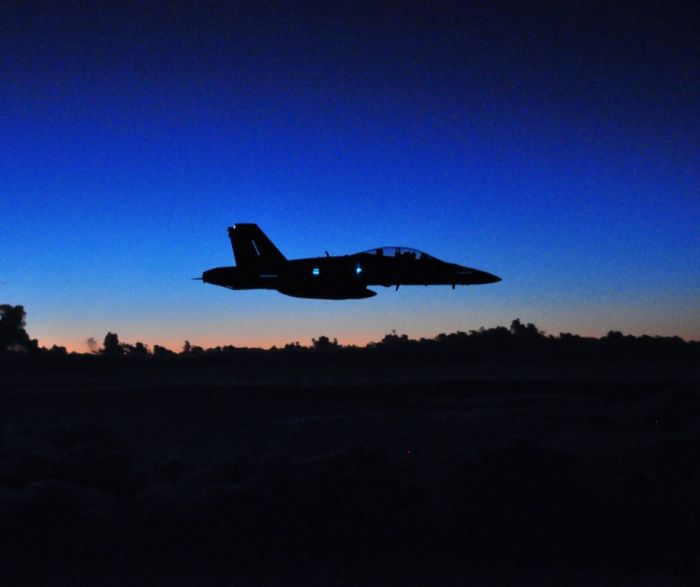|
|
McDonnell Douglas F/A-18 Hornet
|
The F/A-18 is a twin engine, mid-wing, multi-mission tactical aircraft. It is highly maneuverable, owing to its good thrust to weight ratio, digital fly-by-wire control system, and leading edge extensions (LEX). The LEX allow the Hornet to remain controllable at high angles of attack. The wing is a trapezoidal shape with 20-degree sweepback on the leading edge and a straight trailing edge. The wing has full-span leading edge flaps and the trailing edge has single-slotted flaps and ailerons over the entire span.
Canted vertical stabilizers are another distinguishing design element, one among several other such elements that enable the Hornet's excellent high angle-of-attack ability include oversized horizontal stabilators, oversized trailing edge flaps that operate as flaperons, large full-length leading edge slats, and flight control computer programming that multiplies the movement of each control surface at low speeds and moves the vertical rudders inboard instead of simply left and right. The Hornet's normally high angle-of-attack performance envelope was put to rigorous testing and enhanced in the NASA F-18 High Alpha Research Vehicle (HARV). NASA used the F-18 HARV to demonstrate flight handling characteristics at high angle-of-attack (alpha) of 65–70 degrees using thrust vectoring vanes. F/A-18 stabilators were also used as canards on NASA's F-15S/MTD.
The Hornet was among the first aircraft to heavily use multi-function displays, which at the switch of a button allow a pilot to perform either fighter or attack roles or both. This "force multiplier" ability gives the operational commander more flexibility to employ tactical aircraft in a fast-changing battle scenario. It was the first Navy aircraft to incorporate a digital multiplex avionics bus, enabling easy upgrades.
The Hornet is also notable for having been designed to reduce maintenance, and as a result has required far less downtime than its heavier counterparts, the F-14 Tomcat and the A-6 Intruder. Its mean time between failure is three times greater than any other Navy strike aircraft, and requires half the maintenance time. Its General Electric F404 engines were also innovative in that they were designed with operability, reliability and maintainability first. The engine, while unexceptional in rated performance, demonstrates exceptional robustness under various conditions and is resistant to stall and flameout. The F404 engine connects to the airframe at only 10 points and can be replaced without special equipment; a four person team can remove the engine within 20 minutes.
|
|









